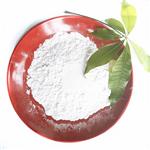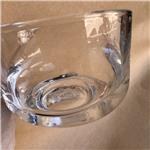Uses
2,4-Lutidine, can be used as a building block in the synthesis of various chemical compounds. It is also used tobacco and aroma component.
Purification Methods
Dry it with Linde type 5A molecular sieves, BaO or sodium, and fractionally distil it. The distillate (200g) is heated with *benzene (500mL) and conc HCl (150mL) in a Dean and Stark apparatus on a water bath until water no longer separates, and the temperature just below the liquid reaches 80o. When cold, the supernatant *benzene is decanted, and the 2,4-lutidine hydrochloride, after washing with a little *benzene, is dissolved in water (350mL). After removing any *benzene by steam distillation, an aqueous solution of NaOH (80g) is added, and the free lutidine is steam distilled. It is isolated by saturating the distillate with solid NaOH and distilling it through a short column. The precipitation cycle is repeated, then the final distillate is partly frozen in an apparatus at -67.8-68.5o (cooled by acetone/CO2). The crystals are collected, then melted and distilled. [Kyte et al. J Chem Soc 4454 1960.] Alternative purifications are via the picrate m 183-184o (from H2O). [Clarke & Rothwell J Chem Soc 1885 1960], or the hydrobromide [Warnhoff J Org Chem 27 4587 1962]. The latter is precipitated from a solution of lutidine in *benzene by passing dry HBr gas: the salt is recrystallised from CHCl3/methyl ethyl ketone, then decomposed with NaOH, and the free base is extracted into Et2O, dried, evaporated and the residue is distilled. [Beilstein 20 H 244, 20 II 180, 20 III/IV 2718, 20/6 V 19.]





